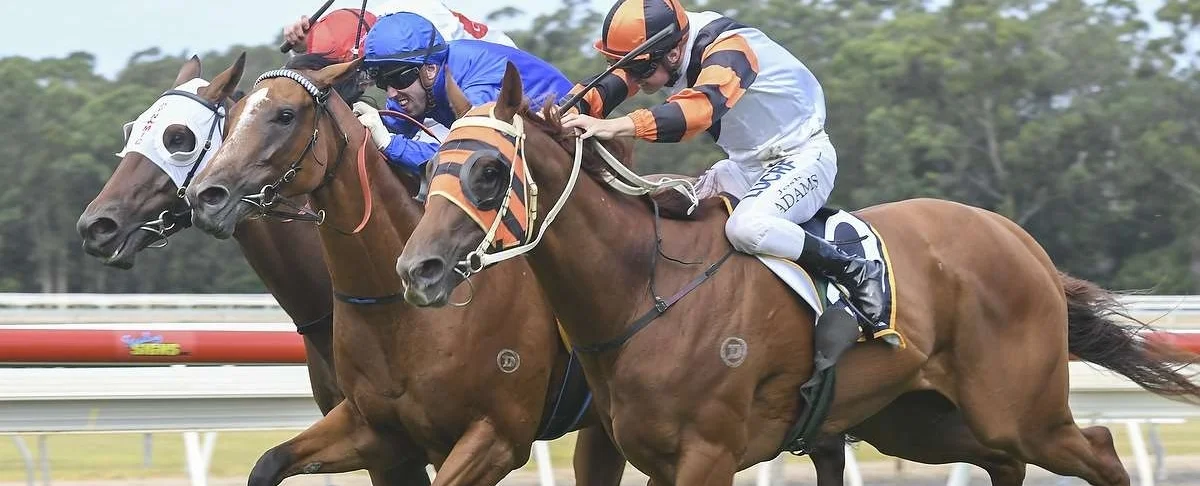(Photo above shows Triplicate on the inside wearing white blinkers. He looked a chance close to home in this Wyong Maiden, but had to be content with third. Winner is “Flying’ in Godolphin blue colours.)
There’s a maiden galloper racing in Sydney currently, whose name rings a giant bell for me.
He’s called Triplicate, a logical name for the son of a mare called Tripled, a non winning daughter of General Nediym. The four year old gelding is by the celebrated Redoute’s Choice, and was a good enough type to attract bids to the tune of $80,000 at the Inglis Premier Yearling Sale of 2016.
He was knocked down to Dynamic Syndications, and later syndicated to some twenty owners, who’ve had little reason to raise a cheer in the gelding’s seven runs to date.
He’s managed three minor placings, and seems honest enough, but he’s frustratingly one paced.
Clarry Conners had a mare by the same name twenty years ago, and raced her out of his Melbourne stable. A Traralgon maiden was her only win in twenty four starts, but she did scape together five minor placings.
Another Triplicate was foaled in Ireland in 2013. He’s a son of the great Galileo, and he disappeared after winning at his only start in 2016. He must have had some ability, because he started odds on, and won easily at Killarney.
The most celebrated of all thoroughbreds to carry the name of Triplicate, was a chestnut colt foaled in the USA in 1941. His thirteen wins and twenty four placings, yielded $244,600, a healthy sum in the mid 1940’s.
He commanded a great deal of attention in his day, not so much for his achievements on the track, but for the fact that he was owned by one of the world’s best loved show business legends.
Fred at his Blue Valley Ranch 1947 - Triplicate with pride of place above the mantle shelf
Fred Astaire, was described by one biographer as the supreme song and dance man of the twentieth century. He was also a keen punter, owner, breeder and racing tragic for most of his long life.
Fred, whose stage career began at age seven, was a famous name in the theatre long before he was enticed to Hollywood. In the 1920’s, he and his sister Adele spent most of their time in London, where they starred in a succession of hit musicals.
Fred’s passion for racing intensified in these years, and he would spend every spare moment at the race track. He owned and raced several horses in England, and mixed constantly with fellow owners, trainers and jockeys. He loved the atmosphere of the track, and could speak the language of racing fluently.
California became Fred Astaire’s home, when his movie career “took off” in the 1930’s. He quickly established the reputation as the hardest worker in Hollywood, but when free of commitments you’d find him at the race track.
A number called “Dancin Man” - movie Belle of New York 1952
In 1943 Fred commissioned his old trainer friend Clyde Phillips to keep an eye out for a “going horse” he could race in California, and told him not to exceed $10,000.
A few months later he got a phone call from Clyde, with the news that he’d outlaid $6,000 for a three year old colt by Reigh Count out of Fairday, which he felt he could “do something with”.
Triplicate won a string of races, and Phillips kept raising the bar. The stallion struck a purple patch during the 1946 Santa Anita season, winning the $50,000 stakes race the San Juan Capistrano Hcp, by five lengths.
Fred Astaire with an arm around trainer Clyde Phillips after San Juan Capistrano Handicap at Santa Anita 1946.
Triplicate was on top of his game when racing moved to Hollywood Park, and Phillips told Fred the horse had a great chance in the Hollywood Gold Cup. The race carried $100,000 (big money in 1946), and 50,000 people crowded into the famous race track, which was sold to developers in 2013.
Fred and his first wife Phyllis sat with actor Randolph Scott, to watch “Trip” come from a long way back to win narrowly from Honeymoon, owned by movie mogul Louis B. Mayer.
The dancing legend described the Gold Cup win as one of the greatest thrills of his life. He was deeply saddened shortly afterwards, when his great friend, trainer Clyde Phillips died at just 53 years of age. Clyde had been ill for some time, and was not himself the day Triplicate won the Gold Cup.
A happy group after Triplicate’s win in the Hollywood Gold Cup.
With heavy heart, Fred arranged for Laurence Campion to take over the training of the stallion. Triplicate raced on for a couple of seasons, and won another stakes race, the $75,000 Golden Gate Hcp in San Francisco, before going amiss.
Fred actually stood the horse in Kentucky for a few seasons, before accepting an offer from a Japanese stud. Triplicate sired a few winners, but nothing with a semblance of his own ability.
Fred Astaire’s racing interests reached Australian shores in the 1960’s. He spent three months in Melbourne in 1959, playing a key role in the classic movie On The Beach. Whenever he wasn’t required on the set, Fred could be found at a Victorian race meeting somewhere.
He became very friendly with Melbourne trainer Stan Murphy, who took him to several country meetings. The movie legend fell in love with Australian racing, and when On The Beach “wrapped”, he asked Stan to buy him a couple of yearlings, and to manage their racing careers.
Murphy attended the Inglis Sydney Easter Yearling sale, and came away with a colt and a filly by the brilliant sire Star Kingdom, on behalf of his celebrity owner.
Astaire named the filly Far Out, and she won three two year old races - one at Werribee, a division of the Hopeful Stakes at Flemington, and the Bloodhorse Breeder’s Plate on the same track.
Fred had a torrid time trying to get a suitable name for his Star Kingdom colt. After many of his requests were refused, Astaire impatiently told Stan Murphy to call him “anything”.
To Murphy’s amazement the name Anything was approved, and the trainer hoped he would cover costs as Far Out had done. Anything showed very little until he got over a bit of ground as a late two year old. On July 2nd 1960, he won a mile race at Flemington impressively enough for jockey Jack Purtell, to declare him “quite promising”.
Unfortunately a tendon injury sustained in that very race, prevented Anything from realising his full potential. He gradually developed a slight “bow” in both tendons, and was a day to day proposition from that point on.
Astaire was keen to sell him, but Murphy talked him into running the chestnut in the upcoming Ballarat Cup. The horse’s work had been impressive, and with only 7st 6lbs (47 kg), Stan conceded him a great chance. With Peter Wallen up, Anything won the Ballarat Cup in equal race record time, and the handsome gold cup trophy was quickly dispatched to Hollywood.
Exactly thirty years later I walked into Fred Astaire’s rambling home in San Ysidro Drive, Beverly Hills. The great man had passed away three years earlier, but his widow Robyn had graciously agreed to give me an interview for Channel 9’s Wide World Of Sports in Australia. It’s well documented that Robyn had been a trailblazing lady jockey in America, retiring after marrying Fred in 1980.
Image 6 - Robyn Smith Astaire early in her riding career.
She wasn’t quite ready to receive us when we arrived at the house, and left instructions with staff that I should feel free to wait in the den. I was gobsmacked to see Fred Astaire’s pool table, his book and video collection, and all sorts of memorabilia from his amazing life.
Just off the den was a small bar, adorned with many race photographs, and trophies. It hit me straight between the eyes! Staring me in the face, was the 1960 Ballarat Cup trophy, won three decades earlier by the horse with no name.
We had a wonderful morning with Mrs. Robyn Astaire, who covered several subjects, including her late husband’s love of horse racing. That interview went to air on Channel 9 in 1990, and several times thereafter on Sky Channel. I have the master tape, and will be proud to post it in 2019 on our new website page, Sky Racing Flashbacks.
It doesn’t take much to send me off on a trip down memory lane. All because I watched a horse called Triplicate go around in a maiden at Wyong the other day.






